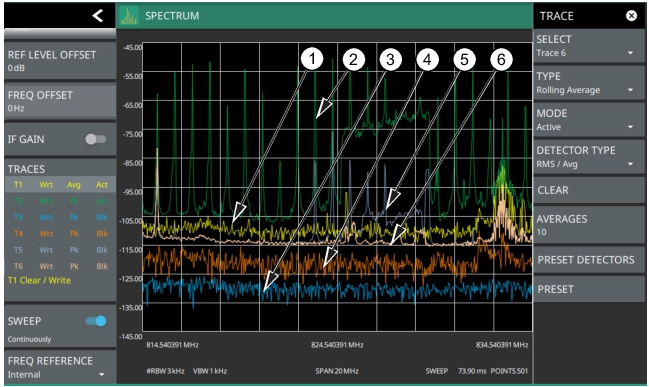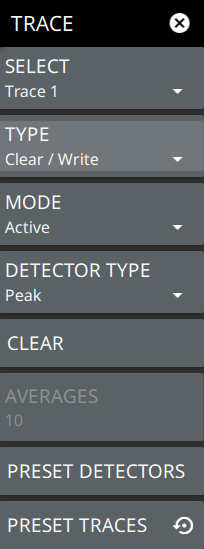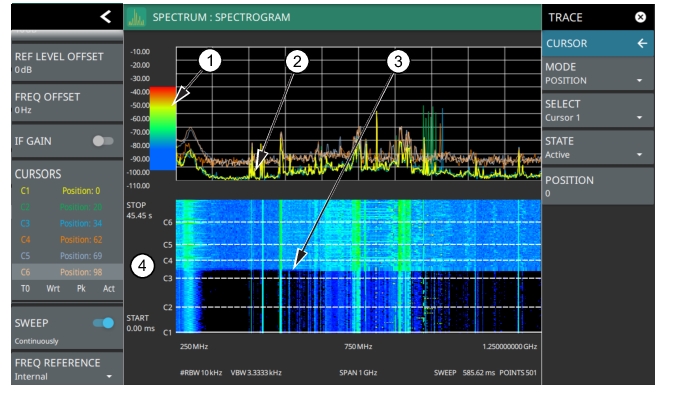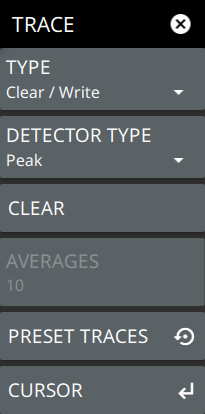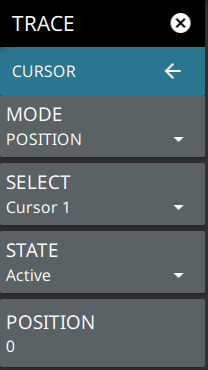TYPE Selects one of the following types of traces: • Clear/Write: Clears the trace after each sweep is complete and writes a new trace. • Min Hold: Represents the minimum value since sweeping began. The number of sweeps is displayed in the status panel TRACES table. • Max Hold: Represents the maximum value since sweeping began. The number of sweeps is displayed in the status panel TRACES table. • Average: The average of all N traces, where N is the AVERAGES number set below. The number of sweeps is displayed in the status panel TRACES table. • Rolling Max Hold: Is the maximum rolling average value of the last N traces, where N is the AVERAGES number set below. The number of sweeps is displayed in the status panel TRACES table. • Rolling Min Hold: Is the minimum value of the last N traces, where N is the AVERAGES number set below. The number of sweeps is displayed in the status panel TRACES table. • Rolling Average: Is the rolling average of the last N traces, where N is the AVERAGES number set below. The number of sweeps is displayed in the status panel TRACES table. DETECTOR TYPE Selects one of three detector types. Several detection methods tailor the function of the instrument to meet specific measurement requirements. There are often more measurement points across the screen than display points. The various detection methods are different ways of dealing with how measurement points will be shown at each display point (see Trace Detector Types). • Peak: This method causes the highest amplitude measurement point to be shown for each display point, assuring that a narrow peak is not missed. • RMS/Avg: In the default case, when the VBW/AVERAGE type is set to Linear, this method detects the average power of measurement points that go into the display point. When VBW/AVERAGE type is set to Log, the traditional average of log (power), such as dBm, is displayed for the detector, as well as for VBW and trace average. High Only or Low Only settings results in faster overall sweep speed, but with no spur or image reduction at all. • Negative: This method causes the lowest amplitude measurement point to be shown for each display point. This method is also useful when looking at modulated signals, to see if some frequencies are not being used. CLEAR Clears the currently active trace data. AVERAGES Sets the number of trace sweeps (N) to average. Available when the trace type is set to one of the averaging modes. PRESET TRACES Presets cursor and trace setup to Clear/Write, Active, with Peak Detector. CURSOR | 